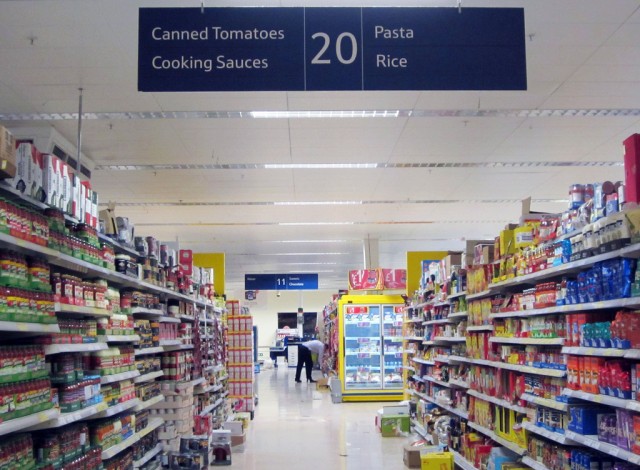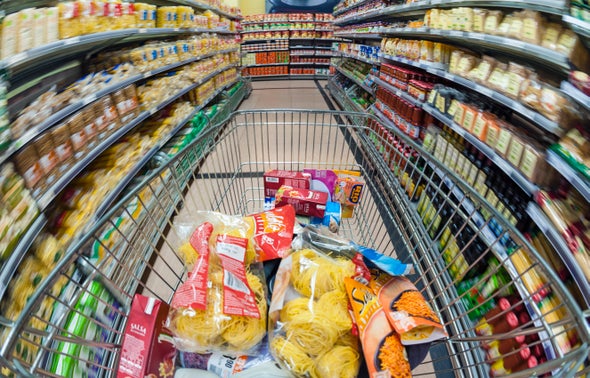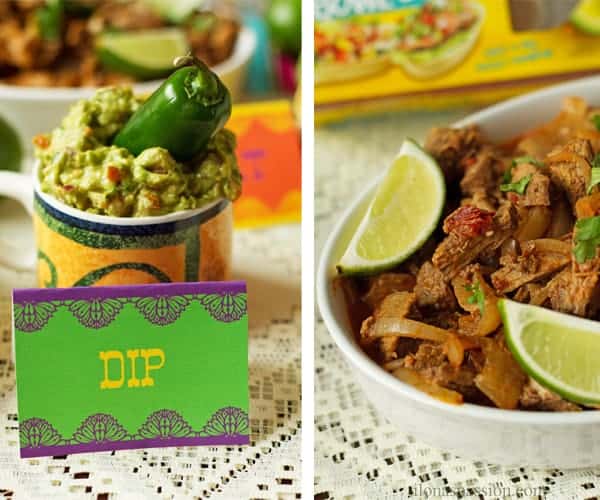44 kcal on food labels
Are kcal the same as Calories? - Cronometer The Calories used on food labels are the same as kcals (kilocalories). 1 Calorie = 1 kcal Was this article helpful? 163 out of 167 found this helpful Have more questions? Submit a request How to Understand and Use the Nutrition Facts Label | FDA That is two times the calories and nutrients shown in the sample label, so you would need to double the nutrient and calorie amounts, as well as the %DVs, to see what you are getting in two...
Why do food labels display energy in two different units ... Kcal and Kjoule,both are the units of energy and are in use in nany countries,hence the food labels display both the units on the nutrition panel for consumers' benefit. Ever since the adoption of international system (SI) of Scientific units, joules has been only defined SI unit of energy. Calories are 60 years predated to joules! .

Kcal on food labels
Calories for Hundreds of Foods: Your Calorie Chart Database Soups are often low in calories, but check the label since any foods can be included. Nuts & Legumes Calories Legumes Beans and other legumes are nutritional foods with calories from carbs, fat, and protein. Nuts & Seeds Nuts and seeds are high in fat and therefore calorie dense, but they are very nutritious. Oils & Fats Calories Oils & Fats Learn How the Nutrition Facts Label Can Help You Improve ... That means if you consume 2,000 calories in a day, added sugars should account for no more than 200 calories. Read the Nutrition Facts labels on your packaged food and drinks to keep track of sugars, fats, protein, and other nutrients. Most sodium we consume is from salt, and salt is commonly in processed foods. How Many Calories Does One KCAL Equal? | livestrong You can find the calorie amount on the food's nutrition label. This information will help you gauge whether you're consuming too many calories per day. NHS points out that the more vigorously you do physical activity, the more calories you'll lose. What's more, if you're trying to lose weight, you'll need to use more energy than what you consume.
Kcal on food labels. Kcal vs. Calories: Differences and Converting Energy in food can also be measured in kilojoules (kJ). One calorie (kcal) equals 4.18 kJ or 4,184 joules (J). If you're looking to convert calories to kJ, multiply the number of calories by 4 ... This is why calorie content is always listed in 'kcals' So that's where the 'k' comes in - it stands for 'kilocalories'. For every 1 'kcal' measure, you can assume you're actually counting 1,000 scientific calories, which sounds pretty scary if you... Sweet chilli jam recipe | BBC Good Food Tip the peppers, chillies (with seeds), ginger and garlic into a food processor, then whizz until very finely chopped. Scrape into a heavy-bottomed pan with the tomatoes, sugar and vinegar, then bring everything to the boil. Skim off any scum that comes to the surface, then turn the heat down to a simmer and cook for about 50 mins, stirring occasionally. Kilocalories Vs. Calories: Understanding The Difference ... While cals and kcal are the most common food energy units used by different countries and companies on their food nutritional labels, some countries also use kilojoules. Some countries known for using kilojoules (or kJ for short) are those in the European Union, New Zealand and Australia. So How Do Kilocalories Vs. Calories Vs. Kilojoules Compare?
Improving the design of nutrition labels to promote ... The NFP on packaged foods. The passage of the Nutrition Labeling and Education Act of 1990 required the provision of standardized nutrition information through the NFP on most packaged foods in the United States. 26 Although some nutrition information on the NFP can vary based on the food product, the standard label includes information about serving size, kilocalories (kcal; calories) and ... Food energy - Wikipedia Many governments require food manufacturers to label the energy content of their products, to help consumers control their energy intake. To facilitate evaluation by consumers, food energy values (and other nutritional properties) in package labels or tables are often quoted for convenient amounts of the food, rather than per gram or kilogram; such as in "calories per serving" or "kcal per 100 ... How to Calculate Kilocalories | livestrong A kilocalorie (kcal) is the same as one large calorie, which is equal to 1,000 small calories. But small calories are uncommon in everyday use — large calories, or kilocalories, are what you're used to seeing on food labels and in nutrition and exercise recommendations. Food Label Accuracy of Common Snack Foods - PMC Therefore, the absolute amount of calories in food is higher than the calories stated on the label and this was evident in our sample of snack food items (6.7 kcal [−4.9, 31.9], p<0.05). Since nutrient absorption has a high inter-individual variability in humans ( 22 ), it may be of more value to report gross calories on food labels as a more ...
Looking at labels - British Nutrition Foundation You'll see on labels, the calorie content is given in kcal and kJ, which are short for kilocalories and kilojoules. Kilocalorie is another word for the well know 'calorie'. Kilojoules are the metric measurement of calories (the calorie figure multiplied by 4.2). Convert kJ to kcal - Unit Converter Definition: A kilocalorie (symbol: kcal or Cal) is a unit of energy defined based on the calorie and is equal to 1000 calories or 4.1868 kilojoules. A calorie (small calorie) is defined as the amount of energy required to increase the temperature of one gram of water by one °C. Guideline Daily Amount - Wikipedia A Guideline Daily Amount (GDA) is a nutrition facts label that originally began in 1998 as a collaboration between the UK government, the food industry and consumer organizations. The process was overseen by the Institute of Grocery Distribution (IGD). To help consumers make sense of the nutrition information provided on food labels, they translate science into … The Science Behind Calories and Nutrition Facts Labels ... The calorie number we see on food labels refers to a kilocalorie (kcal), which is also known as a large calorie or a food calorie. A kilocalorie is 1 000 calories. One kilocalorie is the amount of energy it takes to heat one kilogram of water one degree Celsius at sea level.
Food labels - NHS Most pre-packed foods have a nutrition label on the back or side of the packaging. These labels include information on energy in kilojoules (kJ) and kilocalories (kcal), usually referred to as calories. They also include information on fat, saturates (saturated fat), carbohydrate, sugars, protein and salt.
Convert kJ to kcal - Unit Converter Definition: A kilocalorie (symbol: kcal or Cal) is a unit of energy defined based on the calorie and is equal to 1000 calories or 4.1868 kilojoules. A calorie (small calorie) is defined as the amount of energy required to increase the temperature of one gram of water by one °C. Kilocalories are also referred to as large calories or food calories, and are sometimes referred to as Calories ...
Understanding food labels: portions, energy | Health24 So, although the abbreviations 'cal' and 'kcal' actually have different scientific meanings, manufacturers use them interchangeably. When a food label states that the product contains 50cal and another product contains 50kcal, it actually means the same thing. Low-energy foods
How To Read Food Labels - Perfect Keto Depending on the daily carb intake you've determined for yourself to stay in ketosis, this is a quick way to determine whether you have room in your daily eating plan for a particular food. (Remember, a ketogenic diet is typically a ratio of about 70-75% fat, 15-25%+ protein, and 5% or less of calories from carbs.)
Packaging and labelling | Food Standards Agency The following information must appear by law on food labels and packaging: Name of the food. The name of the food must be clearly stated on the packaging and not be misleading. If there is a name prescribed in law this must be used. In the absence of a legal name, a customary name can be used. This might be a name that has become commonly ...
Difference Between Kcal and Cal (With Table) - Ask Any ... The nutritional values of the food items are generally recorded and then mentioned in the labels on the packet. They symbolise the energy content of that food item. One kilocalorie is equal to one thousand calories. This means, to convert a kilocalorie into a calorie, you just need to multiply the numerical value of the kilocalorie by 1000.
How to Understand and Use the Nutrition Facts Label | FDA 25/02/2022 · People look at food labels for a variety of reasons. But whatever the reason, many consumers would like to know how to use this information more effectively and easily.
How to Calculate Kilocalories | livestrong 13/09/2021 · A kilocalorie (kcal) is the same as one large calorie, which is equal to 1,000 small calories. But small calories are uncommon in everyday use — large calories, or kilocalories, are what you're used to seeing on food labels and in nutrition and exercise recommendations.

What's the deal with food labels? Look for CALORIES, SUGAR, SERVING SIZE, and INGREDIENTS. That ...
Understanding calories - NHS The label will usually tell you how many calories are contained in 100 grams or 100 millilitres of the food or drink, so you can compare the calorie content of different products. Many labels will also state the number of calories in 1 portion of the food.
Kcal vs. Calories: Differences and How to Convert - Healthline 08/03/2021 · When it comes to nutrition and exercise, kilocalories (kcal) and calories equal the same amount of energy. Calories may also be expressed as kilojoules (kJ), with one calorie or kcal equaling 4.18 kJ.
Rhubarb & ginger jam recipe | BBC Good Food kcal: 55: fat: 0: gsaturates: 0: gcarbs: 15: gsugars: 15: gfibre: 0: gprotein: 0: glow in: salt: 0: g. Advertisement. Ingredients. 1kg ; pink rhubarb, trimmed weight1kg ; jam sugar (which has added pectin)zest and juice 1 ; lemon50g ; stem or crystallised ginger, finely chopped4cm ; piece ginger, peeledMethod. STEP 1. Wash the rhubarb under cold running water and slice into 2cm pieces. …
How to Read a Food Label - WebMD The American Heart Association recommends that everyone limit sugar to no more than 6 teaspoons or 100 calories a day for women, and no more than 9 teaspoons or 150 calories per day for men. Those...
Calories on the New Nutrition Facts Label - U.S. Food and ... One package of food may contain more than one serving, so, if you eat two servings you would be getting two times the calories shown on the label. For example, if you ate one serving of the food...
PDF NUTRITION LABELLING INFORMATION - Food Standards Agency 100g/ml of food. • Energy must be displayed as kJ/kcal. • Information must be displayed in this order in tabular format (if space on the label does not allow for tabular format then linear format is permitted). • of which sugarsIf the product contains no added salt a statement indicating 'naturally occurring
Food and Grocery Database API – Documentation – Edamam Measures. The response for each food contains all specialized measures for this food. For example if an apple has a specific unit named ‘slice’ it will come with the response from the API.. In addition to the units provided by the API Edamam supports virtually any weight and volume measures for all foods. Edamam does not return them in the API as it makes the response …
How Many Calories Does One KCAL Equal? | livestrong 30/01/2020 · And as the article title suggests, NHS also provides an idea of what 100 calories look like, using examples of how much of a certain kind of food would be equivalent to 100 calories. For example, about 4 teaspoons of sugar equal 100 calories. Other foods that add up to 100 calories: three slices of turkey or a large apple or banana. These ...



![省 [Basic] Calories in Passion Fruit](https://freecaloriechart.uk/wp-content/uploads/2018/06/caloriesinpassionfruit.jpg)








Post a Comment for "44 kcal on food labels"